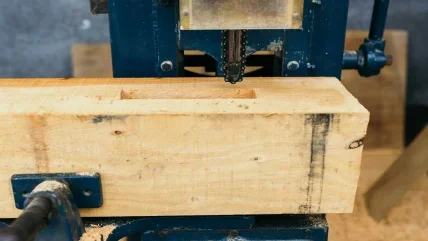
With a general election looming and Brexit negotiations in full flow there are certainly a lot of geo-political elements to think about for the timber trade.
But for the fencing trade, it has always ever been more about the weather as the primary driver of demand. A major storm or prolonged good weather at key times, such as Easter, can make a real difference to manufacturers’ and traders’ balance sheets at the end of the year.
For the fencing manufacturers that TTJ spoke to the general opinion is that things could be better.
Storm Doris in Feburary did have the kind of winds to damage garden fence panels and did mean a boost for business, but unlike previous storms it doesn’t seemed to have hada pronounced effect on the market.
“Things are busy, but fencing is tracking behind last year at this moment in time,” one major fencing product manufacturer told TTJ. “We were expecting bigger things this year from fencing.
“When Storm Doris hit the impact looked substantial but the demand did not sustain itself. In every year with a storm the latent demand can carry on for weeks or months, but this just settled back to standard levels quite quickly.”
He identifies two possible reasons for subdued customer purchasing levels. The first is that customers in the DIY and merchant sector came into 2017 with strong stock holding. Many stockists had taken manufacturers’ advice to stock up before the winter, but with the winter weather not proving severe, they have entered the busier season with bigger stocks than normal and consequently didn’t need to order as much top-ups from producers.
The second possibility was the strong demand in 2014-2015 following storm damage.
“It’s a case of whether the storm-related demand accelerated the need for people to replace fencing. So demand has not been spread out.
“We have no way of knowing that for sure, but there is a feeling that is the case.” The net result is that the key Easter period has not been a bumper period this year. While manufacturers’ sales of standard lap panels have not set the world on fire – one major manufacturer said its sales volumes were down 10% year-on-year – business for value-added and more decorative products was more successful.
The same major manufacturer said this imported decorative fencing was actually 5% up this year.
Several producers have been bringing more focus onto the value-added product stream, with a higher quality finish and differentiating features to help consumers see the possibilities of a different look for their garden.
Just a few weeks ago one of the major producers launched a noise reduction panel which it claimed could cut noise by eight times.
Another fencing manufacturer expressed some concern of rising domestic log prices, saying big mills paying a premium at auction for logs to guarantee their supply meant other buyers could also face higher prices.
He expressed concern that mills which had invested heavily in processing technology over recent years had to guarantee the log supply to make the operations pay. And with not enough commercial forest planting going on he couldn’t see the situation getting any better.
Another fencing mill was less worried about the situation, having more control over its raw material situation and reporting high raw material stocks currently, especially as it hadn’t see the hoped-for spike in Easter demand.
One contact reported a £5/m3 price increase for featheredge material in January and hefty nail price growth as well. He said merchant customers were not looking at this bigger picture when conversations about product price increases were being talked about. The contact reported more people buying pressure-treated fence panels.
On the pallets front, Timcon has been warning regularly of raw material price growth.
The regular Markit/CIPS reports and Pöyry Packaging and Pallet Timber Index has presented an inflationary picture.
With no nail manufacturing in the UK, Timcon members have been hit by the fall in the pound with regard to their nail sourcing from Europe, with at times almost monthly rises being recorded.
One pallet manufacturing contact reported some situations of short supply of pallet timber in certain sizes such as standard 16mm thick.
He reported a £10/m3 growth in homegrown timber prices since the second half of last year, with imported timber price even higher due to the currency situation since Brexit.
“Sawmillers are talking about further increases in Q3, but it will depend on how demand sits at the time.
“Most pallet makers have to address the situation with their customers and sought pallet price increases from the back end of last year.”
But pallet volumes are reported to be reasonable, with construction sector activity being a strong reason for demand. “I do not hear anyone complaining of being really quiet at the moment.”
He said some areas of the country were doing well, such as the southeast.
One manufacturer went into administration earlier this year – Captial Pallets Solutions – when it lost a major contract worth around £500,000, but administrators managed to sell the business and assets promptly to a third party





